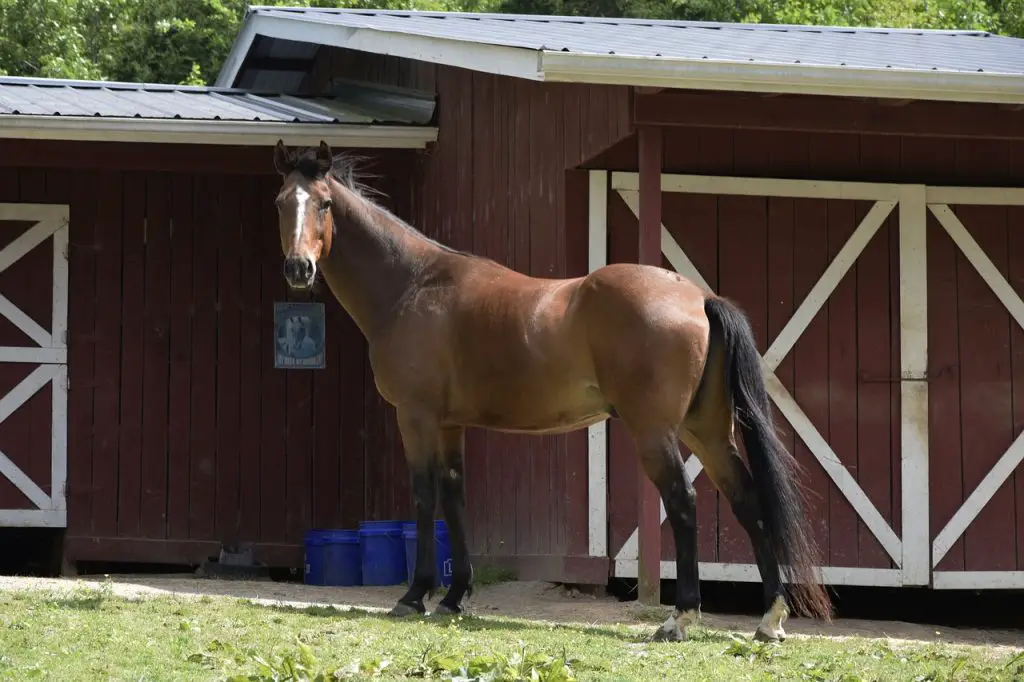Last Updated on February 21, 2022 by Allison Price
Horses behave in the same way as dogs. Some horses love to be petted and some don’t. Some horses love to be rubbed on certain areas while others prefer it in other parts of their bodies. This article will discuss safe petting and finding the “awe that feels good” spot on your horse.
Safety is first
Our article 15 Essential Ground Rules for Horse Safety states that a horse can see you from “where?” How to safely approach a horse. This rule explains why horses have blind spots at the front and back. It is safer to approach horses from the side, near the neck and shoulder areas. This is the best place to begin petting a horse.
If you get a negative reaction
Pay close attention to your horse’s body language. Horses that are unhappy with the way they are being petted will move away immediately. Pin his ears and lift his head. Each horse reacts differently. Don’t be discouraged if your horse experiences a negative reaction.
To have a healthy relationship with your horse, patience is key. Begin with just one or two rubs. Next time you’re near the horse rub him again until that one rub doesn’t cause a negative reaction. Next, increase the number of rubs you give the horse and the time that you allow him to rub.
” Feel good” spot
Do you remember scratching a dog behind its ears and seeing him push his head into your hand. Sometimes horses will react the same way to a scratch. You can also ask them to lower their heads and press against your chest. They may also just stand still and let out an exaggerated sigh. Every horse is unique. We have to be able to read their body language and discern when they are saying “Awe that feels good”.
Not all horses love to be petted
Horses are like people in that they love touch, some don’t care to be touched and some just want to be touched. How can we tell which kind of rubdown our horse friend prefers? Horses communicate with their bodies through body language. It is easier to understand what our horses are trying to communicate if we spend more time with them.

How to care for a horse
Massage – After you’ve approached your horse in a safe area, begin to massage the neck and shoulders. Horses love to be massaged with rhythmic strokes. As if you were giving your horse a gentle massage.
Massage areas: neck, shoulder, chest and hips, barrel. To avoid being kicked, pay close attention to the back legs when you rub under the barrel.
Scratches– Save the scratches for the ears, faces, and other areas that horses can’t reach.
Horses must use their hind feet for scratching their heads. These results can often be disappointing. They will then find something to rub on like a fence post, tree or other object. Horses love to be scratched between their jawbones, on the bottom of their heads. A daily scratch on your horse is a great way to keep them healthy if you live in tick country.
Ears – Horses’ ears can be very sensitive. It may take patience and effort to get the ears to feel comfortable. Most horses enjoy rubbing their ears once they feel how it feels.
Forehead – You can also scratch the forehead below the forelock. This is particularly important if your horse is in dire need of grooming or is shedding.
Horses grooming one another on the withers – It’s not unusual to see horses doing this. This is a good place to scratch. This is especially important if the horse is in shedding season or is suffering from sweat after a ride.
Horses can’t reach the area between the legs and the body where they are facing the front. This is also where troublesome ticks can hide.
Avoid
We want to be able touch our horses all the time. This takes trust and patience. There are some areas you should avoid.
Genital area – We don’t want to scratch our genital region. Instead, this area should be washed. Smegma is an oily, dirty gunk that horses can accumulate between their teats (on mares) and the sheaths (on geldings/stallions). Itchy skin can result. It is a good idea for horse owners to inspect their horses for signs of smegma.
Tail- This is a tricky area. Our goal is to be able brush and groom the horse’s tail. Some horses may go a bit too far. They might like to scratch their tails and then start backing up whenever they see you. This could be misinterpreted as a desire to kick. You should be able to read your horse’s body language. It is also a good idea not to allow this behavior to continue.
Final thoughts
Horses love to be brushed and massaged. It is important that we are able to safely touch horses all over their bodies. Even if they are hurt. Horses will communicate with us via body language if they’re unhappy or when we hit the “awe that feels great” point.



